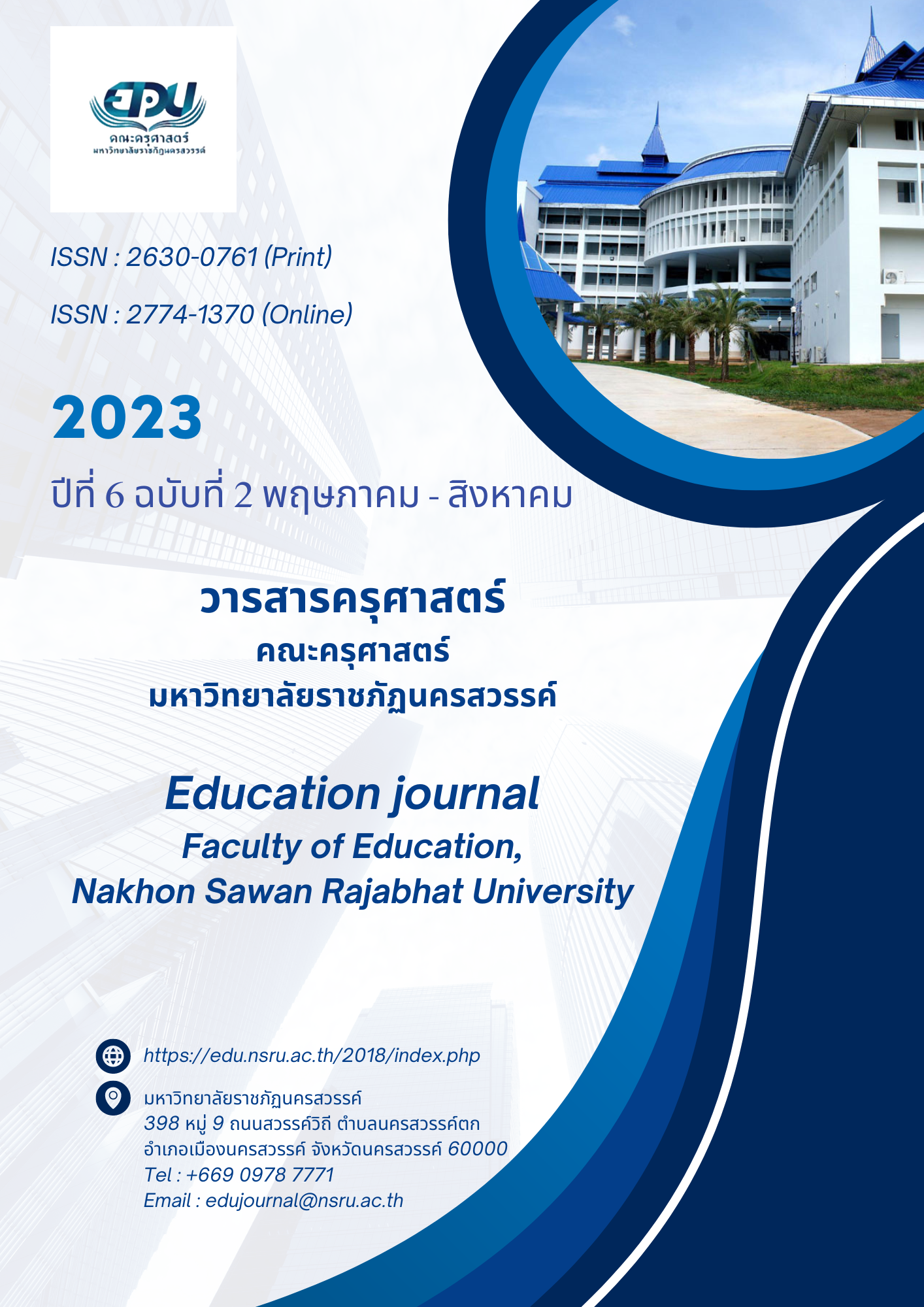The Development of Lifelong Learning Video Media to Promote Social Engineering Skills for Lampang Rajabhat University Students
Main Article Content
Abstract
The objectives of this study were to 1) create and determine the efficiency of video media to promote lifelong learning management which was identified as 80/80 and 2) compare the social engineering skills before and after using video media. The sample used to determine efficacy consisted of nine social engineering students who were interested in participating in this project. Moreover, the sample which used to assess social engineering skills was 30 Lampang Rajabhat University social engineering students who were willing to participate and spent the time on the workshop 8 days, 6 hours per day. The tools were a social engineering skills assessment form with a rating scale and four episodes of video media, two of which were about herbal products and two about food processing. The statistics used for the analysis was percentage, average, and standard deviation. The research findings were as follows:
1) The video media which promote lifelong learning consisted of four parts, 1) Herbal shampoo and treatment, 2) Balm, 3) Grilled Tilapia Chili Paste, and 4) Butter baked banana, was appropriate at a high level and the efficiency was 82.08/83.87 which was within the assigned standardized criteria. 2) Students' social engineering skills were higher after using video media than before. The ability to collaborate with others had the highest average, with a 4.31 average at a high level, followed by communication skills, critical thinking skills, and innovation skills, with averages of 4.25, 4.15 and 3.89 at a high level.
Downloads
Article Details

This work is licensed under a Creative Commons Attribution-NonCommercial-NoDerivatives 4.0 International License.
References
กาญจนา ศิริเจริญวงศ์, มัณทนาวดี เมธาพัฒนะ, สุมาลา สว่างจิต, และ จักรกฤช ปิจดี. (2564). การพัฒนาสื่อวีดิทัศน์และผลของการใช้สื่อต่อความรู้และความพึงพอใจเพื่อการเตรียมนักศึกษาพยาบาล ในการฝึกประสบการณ์เด็กและวัยรุ่น. วารสารวิจัยสุขภาพและการพยาบาล, 37(1): 218-229.
นงรัตน์ อิสโร. (2564). คู่มือพัฒนานักศึกษา เพื่อการพัฒนาประเทศ. กรุงเทพฯ: อมรินทร์.
นรินธน์ นนทมาลย์. (2561). วิดีโอปฏิสัมพันธ์ในการเรียนแบบเปิดในศตวรรษที่ 21. วารสารครุศาสตร์ จุฬาลงกรณ์ มหาวิทยาลัย, 46(4): 211-227.
บุญชม ศรีสะอาด. (2560). การวิจัยเบื้องต้น. กรุงเทพฯ: สุวีริยาสาส์น.
ประสาท เนืองเฉลิม. (2560). การวิจัยการเรียนการสอน. กรุงเทพฯ: สำนักพิมพ์แห่งจุฬาลงกรณ์มหาวิทยาลัย.
พลกฤต แสงอาวุธ, และ บุษยมาศ เหมณี. (2565). การนำนโยบายการพัฒนาทักษะวิศวกรสังคมไปปฏิบัติศึกษาเฉพาะกรณีโครงการยุวชน มรส. สร้างชาติ. วารสารวิชาการธรรมทรรศน์, 22(2): 71-82.
ภูสิทธ์ ภูคำชะโนด. (2565). แนวคิดของวิศวกรสังคม. สืบค้นเมื่อ 3 พฤศจิกายน 2565, จาก https://elfhs.ssru.ac.th/phusit_ph/pluginfile.php/42/.
ศักรินทร์ ชนประชา. (2562). การศึกษาตลอดชีวิต. วารสาร AL-NUR บัณฑิตวิทยาลัย มหาวิทยาลัยฟาฏอนี, 14(26): 159-175.
สมนึก ภัททิยธนี. (2556). การวัดผลทางการศึกษา. มหาสารคาม: ภาควิชาวิจัยและพัฒนาการศึกษา มหาวิทยาลัยมหาสารคาม.
สำนักงานคณะกรรมการพัฒนาเศรษฐกิจและสังคมแห่งชาติ. (2561). ยุทธศาสตร์ชาติ พ.ศ. 2561-2580. สืบค้นเมื่อ 3 พฤศจิกายน 2565, จาก https://drive.google.com/file/d/1XSBMp8OCsauJqECOB-XZLB91-cRrNsEV/view.
สำนักงานเลขานุการกรม. (2562). องค์ความรู้ เรื่อง หลักการผลิตสื่อวีดิทัศน์เพื่อการประชาสัมพันธ์. สืบค้นเมื่อ 3 พฤศจิกายน 2565, จาก file:///Users/kanitkanpankaew/Downloads/001.pdf.
อดิศักดิ์ โคตรชุม. (2562). การพัฒนาสื่อวีดิทัศน์ เพื่อประกอบการเรียนรู้รายวิชาการงานอาชีพ และเทคโนโลยี เรื่อง การจัดและตกแต่งสวน ชั้นมัธยมศึกษาปีที่ 2. วารสารโครงงานวิทยาการคอมพิวเตอร์และเทคโนโลยีสารสนเทศ, 5(2): 67-76.
อภิณห์พร สถิตภาคีกุล. (2561). การออกแบบการเรียนการสอน: ทักษะเพื่อความสำเร็จของครู. วารสารนาคบุตรปริทรรศน์ มหาวิทยาลัยราชภัฏนครศรีธรรมราช, 10(ฉบับพิเศษ): 107-115.
Faiz, P., & Agustine, O. (2018). The Indonesian constitutional court decisions as a social engineer in improving people’s welfare. The 1st International Conference on Recent Innovations, (ICRI 2018): 165-170.
Hainuat, L. D. (1981). “Educational needs” in UNESCO. Curricula and lifelong education: Education on the move. France: Imprimeries de Chambery.
Smaldno, S. E., Lowther, D. L., & Russell, J. D. (2012). Instruction Technology and Media for Learning tenth edition: Enhancing Learning with video. Boston: Pearson.


